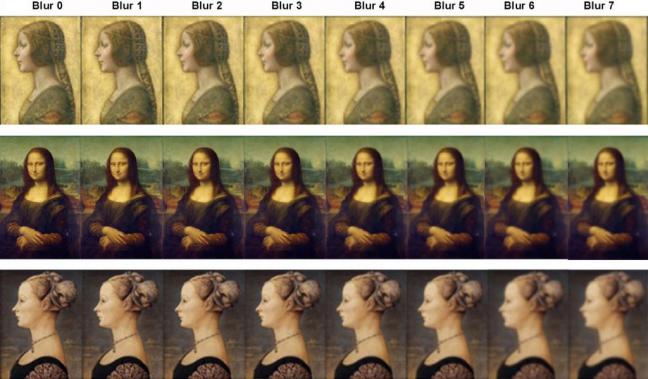SHEFFIELD, England, Aug. 10 (UPI) — Mona Lisa‘s smile has captivated and confused onlookers and scientists alike for centuries. Depending on one’s vantage and how the eyes are focused, Leonardo da Vinci’s masterpiece is either smirking or somber.
Now, there’s evidence that Mona Lisa wasn’t the first da Vinci subject to boast an enigmatic grin. According to researchers at Sheffield Hallam University, the artistic technique that created that famous smile may have first been fleshed out in the rendering of a painting called La Bella Principessa, “The Beautiful Princess” in English.
Only recently was it confirmed that the La Bella Principessa portrait was painted by da Vinci. New analysis by scientists Alessandro Soranzo and Michael Newberry suggests the antecedents of Mona Lisa’s puzzling lips can be seen in the visual techniques responsible for the pseudo-smile in La Bella Principessa.
The subject of the early portrait is thought to be Bianca Sforza, the 13-year-old daughter of Ludovico Sforza, duke of Milan.
The researchers, who recently shared their analysis in the journal Vision Research, say the portrait is proof that the befuddling expression in Mona Lisa was no accident.
Analysts who have studied Mona Lisa point to the changing shape of the lips depending on the onlooker’s perspective. Look directly at the mouth, and Mona Lisa’s smile is dampened — flattened to a pursed pose of disinterest or sadness. But as the eyes refocus to absorb the details of the outer face and hair, the smile widens. Some have remarked that it’s as if da Vinci painted a happy Mona Lisa atop a sad Mona Lisa.
The same techniques are apparent in La Bell Principessa.
“The results from the experiments support the hypothesis that that there is a gaze-dependent illusory effect in the portrait of La Bella Principessa,” Alessandro Soranzo, from Sheffield Hallam’s department of psychology, explained in a press release.
“Although it remains a question whether the illusion was intended, given Leonardo’s mastery of the technique and its subsequent use in the Mona Lisa, it is quite conceivable that the ambiguity of the effect was intentional, based on explicit artistic skill and used in line with Leonardo’s maxim that portraits should reflect some ‘inner turmoil of the mind’.”






